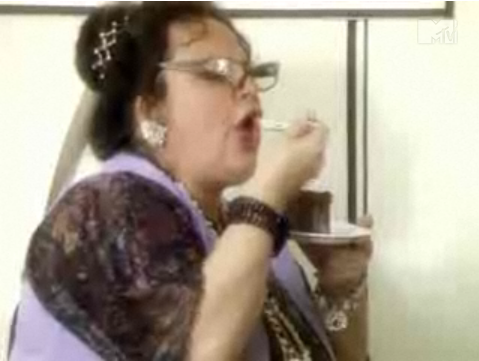So, I finally got around to reading the “controversial” article that Kurt Andersen wrote about how staid our pop culture has become. I was actually sympathetic to the thesis before I read the piece — I, too, have marveled at how some pop music from the 80s (e.g., Talking Heads) and 90s (e.g., Nirvana) would not be out of place today, or how we’re basically the same t-shirt-and-jeans wearing culture that I grew up with in the 70s. But it doesn’t take much thinking to realize the claim that we’re not seeing new cultural inventions is patently untrue, and smacks of pathetic Baby Boomer myopia (Andersen was born in 1954, smack dab in the heart of the Baby Boom).
It’s distressing that Andersen, who has been a leading cultural critic, is so… superficial. It seems the basis of his commentary is how people dress, shave, and what they listen to. There’s so much more to life than that.
Here are cultural items in 2011 (and a few years earlier) that are new and different, interesting, or simply even unimaginable compared to the state of cultural items in 1991.
Video games
This is probably Andersen’s most glaring oversight, and demonstration of his Boomer irrelevance. He doesn’t mention video games at all. Yet, um, this is a US$65 billion cultural product. And video games are most definitely quite different than they were in 1992.
Dining and drink
Maybe Kurt Andersen doesn’t eat out? Because menus at restaurants today are much different than they were 20 years ago. Freshness, seasonality, farm, etc., are often mentioned. Dining has gotten stranger, more adventurous, and more interesting. Farmers markets are everywhere, and folks everywhere know what a satsuma is. Food trucks have brought quality food into strange locales, and often using a fusion of foodways that had previously been unthinkable (Korean tacos, anyone?).
And then there’s the whole cocktail revolution that is occurring alongside the artisanal food movement. The playfulness and experimentation going on in bars and restaurants was definitely not the order of the day in 1991.
Architecture
In international architecture, 1997 was an important year — the opening of Guggenheim Bilbao, and the beginning of the ripply-curvy-made-possible-by-CAD-and-simulations architecture. 14 years later, and Bilbao definitely looks contemporary. But, still, that’s not 20 years. And there does seem to be an emerging aesthetic around steel, glass, and wood, perhaps best embodied by the Apple Store (first opened in 2001) that is gaining in prevalence.
Television
Two very big things in 2011 that weren’t even on the radar in 1991. The first, which Andersen himself even acknowledges, but then dismisses, are the season-long complex narratives, such as The Sopranos, The Wire, Breaking Bad, Mad Men, etc. Yes, there was Hill Street Blues back in the day, but the prevalence, and presentation, are quite different.
The other, and more obvious, is the rise of reality TV. Whether singing shows like American Idol, competition shows like The Amazing Race, Survivor, Top Chef, or Project Runway, or look-at-the-freaks like Real Housewives and Jersey Shore, reality teevee is so different than anything we saw in 1991 it’s ridiculous. Yes, The Real World was first shown in 1992, but it looks so tame as to simply outdated.
Web genres and content
Considering there wasn’t a public World Wide Web, and considering the eruption of so many new modes of expression online, it’s shocking that Andersen pretty much neglects an entire new medium. Whether “home pages”, blogs, or other personal sites, or internet memes like LOLCats or viral videos, there’s an immense category of cultural product that simply had no analog 20 years ago. And a cultural product that is not trivial, but takes up much of the attention that was devoted to more traditional media 20 years ago.
Info-aesthetics
Thanks to the heaps of data we’re subject to, there has emerged an information visualization aesthetic, exemplified by Feltron, The New York Times, or tools like Google Analytics. This isn’t to say we didn’t have information graphics before, but they were fewer and much farther between, and rarely at the level of sophistication that we are getting accustomed to seeing.
And I’m sure there’s more
What I’ve written here came to me in the course of reading Andersen’s piece, and I’m sure that if I bothered to think about it and research it even for another, oh, hour or so more, I could probably double the number of entries. All of this to show that Andersen is either lazy, small-minded, or both.
One thing that he’s inadvertently picked up on, but doesn’t seem to realize, is that now that we’re not as subject to a mass culture with limited channels, cultural products no longer need to be replaced, because there’s plenty of room in the cultural landscape for new and old cultural expression to sit side by side. And because of digital records and the ease of accessing them, those old things simply don’t go away the way they used to, and so it feels like change isn’t occurring.
It’s disappointing that Kurt Andersen, the host of what is ostensibly a radio show about pop culture, seems this unaware of what is actually going on around him (and maybe this is why the show, which I used to follow religiously, has fallen off my podcast radar).

